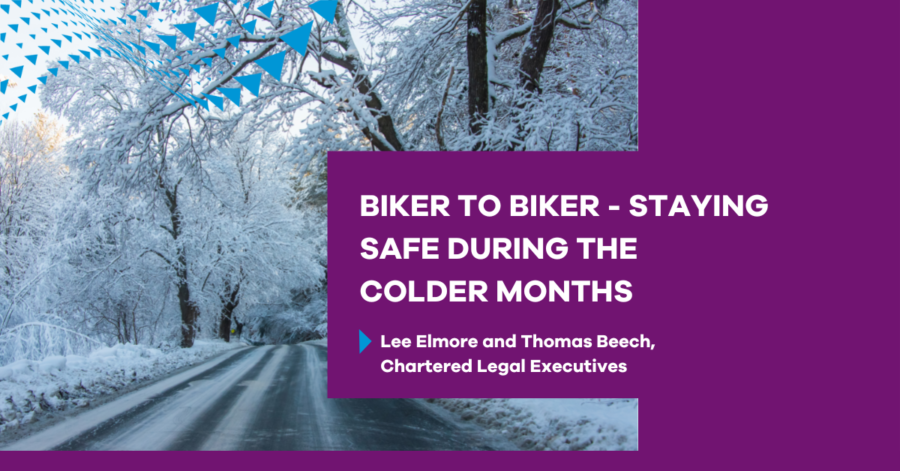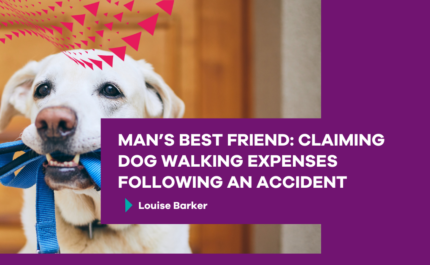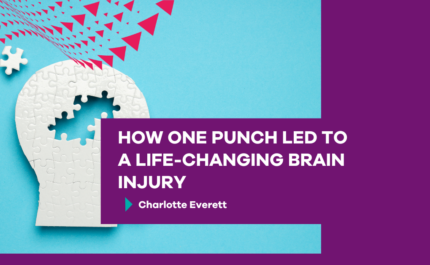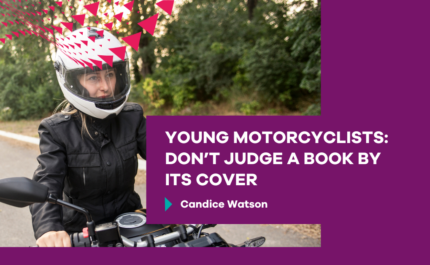
Serious Injury team members Lee Elmore and Thomas Beech are confident motorbike riders, but with colder, more unpredictable weather that winter brings, there is a higher risk of accidents and their safety is paramount.
We caught up with them to find out how they prepare for the colder weather.
Working with people who have had bike accidents on a daily basis, does your work stick with you when you’re out on the roads?
Lee: I can’t remember at what point during the hot summer of 2019 I decided, at the tender age of 48, to take up riding, but it has been an interest of mine since I was a kid, taking my bike test.
The conflict of being a serious injury lawyer primarily dealing with seriously injured bikers for the past 25-years was always at the back of my mind, a bit like a bug trapped inside my helmet.
I’ve been lucky enough to be able to tour Scotland and Wales on my bike, covering over 2,000 miles of twisty, winding roads, rainy and foggy mountain passes.
It has given me a wealth of knowledge and experience on how to deal with all manner of different situations.
Thomas: Riding at the best of times can be fraught with danger and this is a risk many of us accept, but as we are coming into autumn these risks seem to get worse and more regular.
And although the appeal of staying inside where it’s warmer is getting stronger, there are certainly those of us at the moment trying to fit in every last ride before the end of the year, especially having watched my bike sit on the drive during lockdown months.
My background as a personal injury lawyer has taught me a few things I can do to reduce those risks, and there are things other drivers who don’t ride can also do to keep us all safer on the roads.
Lee: I passed my test in November a few years ago, which was probably the wrong time of year to be a new rider.
Riding in the wet and with poor to no daylight was certainly disconcerting at first.
With my legal background and experience, I had a very much heightened state of awareness for the first few months of riding, being the time of year, it was.
How do you prepare your bike for the changing conditions?
Thomas: Preparation for riding later in the year starts, at least for me, in the summer.
When it’s time to change my tyres, I consider the unpredictable weather, I could have all of the seasons in one day.
The tyres have to see me through riding in heavy rain and maybe even hail.
They’re the only part of my bike in contact with the road, so I need them to grip regardless of the rain or leaves on the road and to allow me to stop quickly should I need to.
I need to have faith in my tyres, so I go for something with a bi-compound and a large footprint.
Lee: Road grip definitely changes during the winter, and it’s more often wet than not, diesel spills and other road debris such as gravel, glass from accidents and also frost can almost be invisible.
Keeping your bike in tip-top conditions helps as much as possible if the situation arises you have to deal with these – so keeping your bike clean in the cooler months is a must.
You can have as many lights as you like, but if they’re covered in road grime, you won’t be seeing any hazards ahead or be seen by anyone else.
It also helps you to spot any potential maintenance issues such as tyres which need replacing or other faults with the bike.
Thomas: The bad weather increases the need for maintenance checks.
It becomes even more important as the light fades earlier to make sure you are seen by other road users, so even simple steps like checking your lights are in working order are key.
Up there with some of the basic checks you should be doing is to check your tyre pressures and chain.
As the roads get full of muck it’s important it isn’t getting into your bike.
How do you prepare yourself for the changing conditions?
Lee: Staying warm, and dry, is a big part of staying safe.
If you’re cold and/or wet, then you can’t react as well, because your mind and body are concentrating on keeping you warm.
Your fingers won’t react, your hips and back will be stiff, not allowing you to manoeuvre the bike properly and, overall, you’re putting yourself in a potentially hazardous position.
Plus, if you’re cold and wanting to get home as quickly as possible, which could lead to an accident.
Good quality winter gear is essential and doesn’t need to cost a lot, but you should always buy the very best you can.
Thomas: I carry my waterproofs in a small bag on top of my seat cowl, so I can put them on quickly if I need them.
One thing I rarely compromise on for longer rides is my one-piece leathers, they ensure maximum protection even under my waterproofs should the worst happen.
To ensure I stay as warm as possible I wear multiple layers under my leathers and often a coat over the top.
If I’m warm my focus can be on the road and what’s going on ahead of me.
How important is changing your safety equipment during the cooler months?
Lee: There’s nothing worse than having cold hands in my opinion, and I always take a second pair of gloves if I am travelling any sort of distance.
They don’t have to be very expensive, but make sure they’re CE approved and buy the best you can afford.
It’s not currently a legal requirement in the UK to wear any protective equipment other than a helmet, but common sense says if you’re placing yourself out in the real world, at the mercy of cars, lorries, other bikes, then you need to be as protected as possible.
The first thing a human does when they fall is reach their hands out to stop. If you’re not wearing the right level of protection on your hands then you’re in for a very long period of rehab if you come off.
Thomas: I always replace my summer gloves with my water-proof ones – they don’t necessarily have to be thick ones.
I use waterproof leather gloves, so I still have a good feel for the handlebars but get an extra bit of protection.
My other essential bit of kit is a helmet with a pin lock visor.
This helps to stop your visor fogging up and eliminates the need for you to open the visor to de-mist it, which often results in rain and anything else flying into your helmet and in turn your eyes.
They can be a little more expensive but in my option the benefits of being able to see, especially when hazards can come at you from any direction at any time far outweighs the cost.
Lee: The helmet I wear is shiny black with dayglo green all over it, which helps me to stand out in the dark.
White is the most visible helmet to wear if you can.
Riders need to really work at being seen on the roads during the colder months, how can drivers help?
Thomas: If you’re a driver, take an extra few seconds to look twice.
Where do you need to be you can’t get to 10-seconds later by taking time to look twice?
Are those two lights you can see the headlights from a car far away or the headlights of a motorbike up close? Those extra few seconds could save someone’s life.
Lee: Experience as a motorist and lawyer, but more so now as a biker, has taught me you should never leave the responsibility for your safety to others.
How do you navigate filtering and traffic when riding, particularly in bad weather?
Thomas: Half of the enjoyment of riding a motorbike is getting out on the bike and ending up where you end up.
However, it can often be safer to plan your journey and know where you’re going.
Before you set off, check traffic alerts to avoid hitting long traffic jams.
Sometimes there’s nothing more frustrating when you want to ride than getting stuck in traffic.
When it’s raining and cold you want to get out of the traffic as soon as you can, and this can lead people to take risks they wouldn’t normally take.
Lee: Filtering is a major cause of biker collisions and although it is legal, it is very often frowned up by the courts where the act of filtering has put the biker in conflict with another road user.
However, bikers very often, see the filter as being part of biking, if we wanted to sit in traffic, we’d take the car.
This is most often in towns and cities where traffic is queuing in the mornings and evenings and now both of these are getting darker, bikers need to be properly prepared to deal with any emergency situations and, if it looks like there’s a risk, not to take it.
Ride safe and stay rubber side up!
To find out more about the work our bike team do click here.
To follow the bike team on LinkedIn click here.



